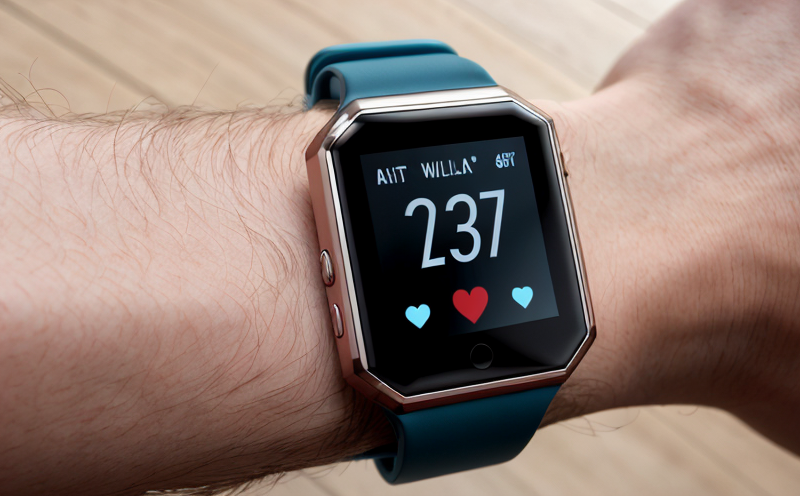ISO 10993 Biocompatibility Testing of Wearable Skin Contact Materials
The International Organization for Standardization (ISO) standard ISO 10993-10 specifies biocompatibility testing procedures aimed at ensuring that medical devices, including wearable skin contact materials, do not cause adverse effects when used. This service ensures compliance with regulatory requirements and enhances the safety profile of products destined for human use.
Wearable skin contact materials are a subset of medical devices designed to be in direct prolonged or repeated contact with the surface of the body, such as smartwatches, fitness trackers, and other health monitoring devices. These materials must undergo rigorous testing to ensure they do not cause irritation, allergic reactions, cytotoxicity, or other adverse effects.
The testing process involves several stages that evaluate various aspects of biocompatibility:
- Initial Evaluation: This step assesses the necessity and appropriateness of biocompatibility testing based on the intended use and materials of the device. It includes a risk assessment to determine which tests are required.
- Extraction Testing: Extractables from the material are analyzed to identify potential substances that could leach into the skin during prolonged contact.
- Cytotoxicity Testing: The biocompatibility of the materials is evaluated by exposing cell cultures to extracts and assessing changes in cellular viability, morphology, or function.
- Genotoxicity Testing: This test evaluates whether the material can cause genetic damage, which could lead to cancer development over time.
- Allergenicity Testing: The potential for allergic reactions is assessed by exposing human cells to extracts from the materials and monitoring immune responses.
These tests are critical in ensuring that wearable devices do not pose a risk to users, especially those who may wear them continuously or frequently. Compliance with ISO 10993-10 is essential for regulatory approval and market access in many countries around the world.
| Test Stage | Description | Objective |
|---|---|---|
| Initial Evaluation | Determines necessity and appropriateness of biocompatibility testing. | Evaluates risks and selects appropriate tests. |
| Extraction Testing | Analyzes extractables from the material. | Identifies potential substances that could leach into skin. |
| Cytotoxicity Testing | Evaluates biocompatibility using cell cultures. | Aims to assess changes in cellular viability, morphology, or function. |
| Genotoxicity Testing | Evaluates potential for genetic damage. | Determines if the material can cause cancer development over time. |
| Allergenicity Testing | Evaluates immune responses to extracts from materials. | Assesses potential for allergic reactions. |
International Acceptance and Recognition
The ISO 10993-10 standard is widely recognized and accepted by regulatory authorities around the world, including the United States Food and Drug Administration (FDA), European Medicines Agency (EMA), and other international bodies. Compliance with this standard ensures that wearable skin contact materials meet stringent safety requirements, enhancing trust and confidence in the products.
Many countries have adopted ISO 10993-10 as a national standard or reference document for medical device regulations. This recognition simplifies compliance processes for manufacturers and facilitates market access in multiple jurisdictions. Compliance also provides an added layer of protection, ensuring that products meet the highest safety standards.
For quality managers and compliance officers, adhering to ISO 10993-10 is crucial for avoiding costly delays in product launches and ensuring long-term success in the medical device industry. It demonstrates a commitment to user safety and regulatory adherence, which are key factors in building trust with healthcare providers and consumers.
Competitive Advantage and Market Impact
- Enhanced Safety Profile: Compliance with ISO 10993-10 provides a competitive edge by offering a higher level of safety, which can be marketed as a key differentiator in the crowded wearable market.
- Facilitated Market Access: Meeting regulatory standards like ISO 10993-10 opens doors to international markets and reduces compliance risks.
- Increased Consumer Trust: A strong safety record can significantly enhance consumer trust, leading to increased market share and customer loyalty.
- Cost Savings in the Long Run: By avoiding recalls or withdrawals from the market due to safety issues, companies save on potential legal fees and reputational damage.
- Prioritized by Regulators: Compliance with recognized standards like ISO 10993-10 is often prioritized in regulatory reviews, streamlining approval processes.
Use Cases and Application Examples
The ISO 10993-10 biocompatibility testing service is essential for a variety of wearable skin contact materials, including:
- Smartwatches with embedded sensors.
- Fitness trackers worn on the wrist or body.
- Health monitoring patches that adhere to the skin.
- Wearable electronic devices designed for continuous use.
In each of these cases, the testing ensures that the materials used in direct contact with the skin are safe and do not cause adverse effects. This is particularly important for consumer electronics companies looking to expand their product lines into medical-grade wearables.





